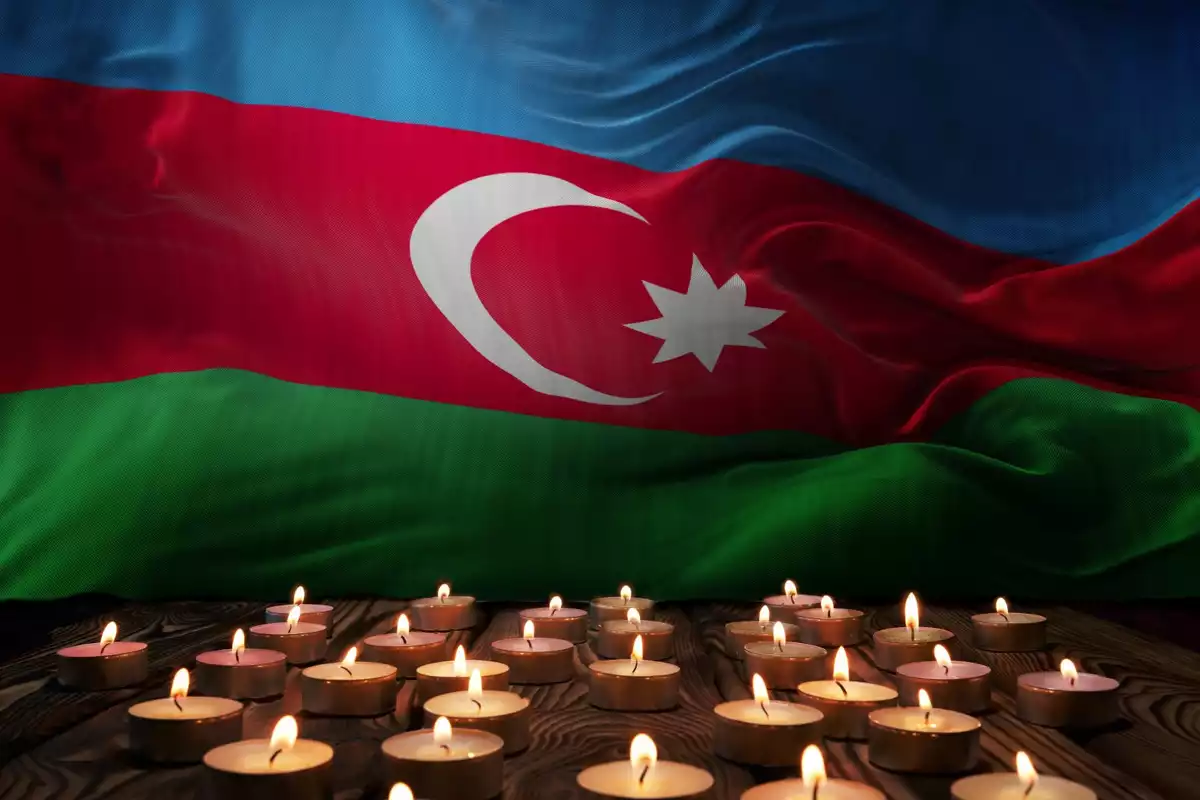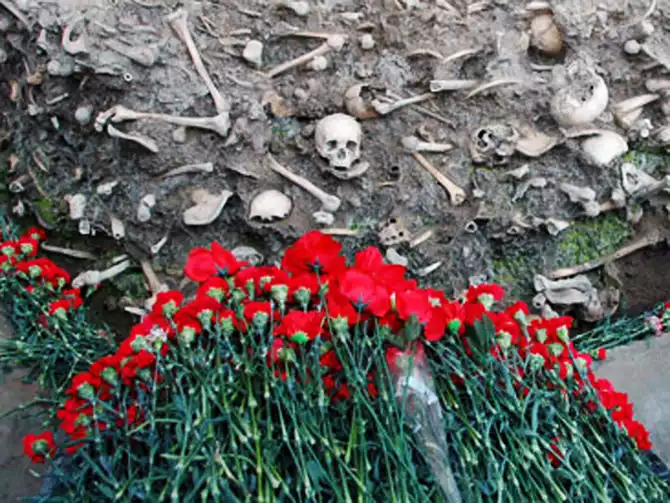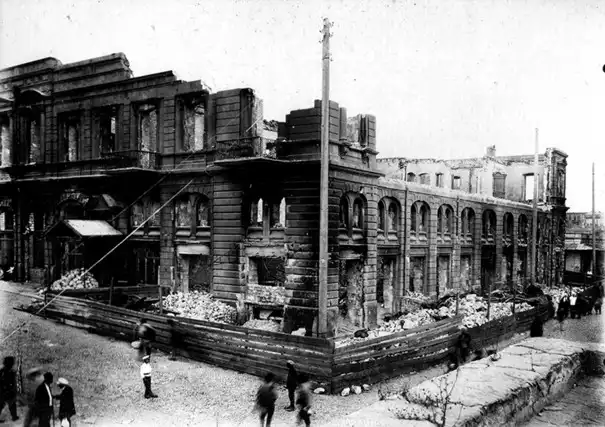
Photo: Shutterstock
By Tural Heybatov
March 31 - Day of the Genocide of Azerbaijanis. In the spring of 1918, a genocide was carried out in the South Caucasus by Armenians with the support of the Bolsheviks. Although the term "genocide" did not exist at that time, what the Azerbaijani population experienced at the hands of the Dashnaks and the Bolsheviks was nothing other than genocide - a monstrous crime against humanity. Unlike the so-called "Armenian Genocide", the genocide of Azerbaijanis is supported by numerous documented sources.
Not long ago, materials from the Extraordinary Investigation Commission of the Azerbaijan Democratic Republic, created on July 15, 1918, were published for the first time. To ensure the objectivity of the investigation, the ADR government involved professional lawyers and judicial officers, the majority of whom were non-Azerbaijanis by nationality. In Baku, the investigation was headed by A. Kluge; in the Guba and Shamakhi districts - by A. Novatsky; in the Aresh, Nukha, and Zangezur districts - by N. Mikhailov and others.
The commission operated until November 1919 and carried out large-scale work. Draft resolutions were prepared to initiate criminal cases regarding the crimes committed against the Muslim population in Baku and its district, as well as in the Guba, Shamakhi, Geokchai, Aresh, Nukha, Jebrail, Jevanshir, Shusha, and Zangezur districts. In all these areas, Armenians used the same brutal methods to exterminate the local population without regard for age or gender. The investigators were especially shocked by the fact that not only Dashnak gangs, but also part of the local Armenian population, including representatives of the Armenian intelligentsia, took part in the killings.
It is important to note that genocide was also committed in the Iravan province, but the Extraordinary Commission was not allowed to investigate those cases.

Photo credit: virtualkarabakh.az
The 1918 genocide was the first stage of the Armenian ethnic cleansing policy in the region. The final stage was intended to be the Karabakh conflict unleashed by Armenia in the late 1980s. During the ethnic cleansing in Armenia, the First Karabakh War, and the occupation, Azerbaijanis were subjected to the same atrocities as their innocent compatriots in March 1918. The tactics of Armenian nationalists did not change.
Armenians did not distinguish between men, women, and children. One indicative example: according to eyewitnesses, the Dashnaks broke into the house of Haji Amir Aliyev, killed the 80-year-old man, his two wives aged 60 and 70, slaughtered his three young grandchildren, and crucified his 25-year-old daughter-in-law alive on the wall.
At the end of the 20th century, Armenians who lived well and prospered in Baku once again showed ingratitude - just like at the beginning of the century. During the years of the war of occupation, they ran people over with tanks of the departing Russian army - just as in 1918 they fired at unarmed Muslims with weapons bought from Russian soldiers leaving the Caucasus front. In both cases - in the late 1980s and in 1918 - Armenians had prepared in advance for the massacres: gathering in secret meetings, collecting weapons, signing documents, and organizing provocations.
Eyewitnesses of the events of March 1918 in Baku described what happened as something beyond the worst nightmares. The streets were filled with mutilated corpses - noses and ears cut off, stomachs ripped open. Clothes and jewelry were torn off the bodies of murdered Muslims. Even the Bolsheviks who relied on the Dashnaks were shocked by what they saw. In the end, revolutionary sailors were the ones who stopped the bloodshed - they threatened to shell the Armenian districts of the city from the ships.
In 1925, a witness of those terrible events - a German named Kulner - described what he saw in Baku:
“Armenians, bursting into Muslim (Azerbaijani) neighborhoods, killed everyone indiscriminately, chopped with sabers, stabbed with bayonets. Among the 87 Azerbaijani corpses pulled a few days later from one pit, all had their noses and ears cut off, stomachs ripped open, and genitals mutilated. Armenians did not spare either children or old people.”

Photo credit: azerbaijan.az
From July 15, 1918, to November 1, 1919, the Extraordinary Investigation Commission collected 36 volumes and 3,500 pages of materials. Six volumes - 740 pages - were devoted to documenting acts of violence committed by Armenian armed groups against the Muslim population of Baku and its surroundings. Hundreds of testimonies - not only from Azerbaijanis, but also from other nationalities - confirm the scale of the tragedy, which can be compared to the crimes committed by the Nazis during the Second World War.
The facts revealed during the investigation defy understanding.
Commission member Novatsky, in his report on the destruction of Shamakhi and the violence committed against its Muslim population, wrote:
“On March 18 (31), 1918, early in the morning, Armenians attacked the city. At that time, Armenian residents of the upper part of the city opened fire on the Muslim part. Once inside, the Armenians began exterminating the Muslim population. Their every step was accompanied by arson, civilian killings, and looting. The best houses, belonging to the rich and prominent Muslims, were set on fire. All residents, regardless of gender and age, were shot in the streets. These murders were accompanied by incredible cruelty and torture.”
Armenians looted all Muslim property, tortured people to extract money and valuables. The streets were strewn with the bodies of murdered women and children. According to Novatsky's report, the Muslim population of Shamakhi was subjected to brutal torture for several days. Only the approach of Turkish troops forced the Armenians to stop their atrocities for a time.
The same happened in Guba. The Guba genocide was a continuation of the massacres in Baku and other regions. In early May 1918, Armenian gangs - about 2,000 militants under the leadership of the infamous killer Amazasp and Bolshevik commissar Venunts - approached the city. According to the German historian Jörg Baberowski, entering the city, Amazasp told the people gathered that he had been sent to avenge the “murdered Armenians” and had received orders to exterminate all Muslims from the shores of the Caspian Sea to the peaks of Shahdag. According to Baberowski, the Armenians committed monstrous atrocities. In one day alone, 2,000 people were killed and 150 houses in the center of the city were destroyed. The victims of the massacre were not only Azerbaijanis, but also Jews and Lezgins living in Guba and nearby villages.
The genocide, which began in Baku in March 1918, continued for several months. Only the intervention of the Caucasian Islamic Army stopped the Armenian atrocities. Passing through the territory of Azerbaijan, Turkish soldiers, together with Azerbaijani units, liberated Baku from the Dashnaks and Bolsheviks on September 15, 1918.
But that is a different story, which we will return to.
Share on social media